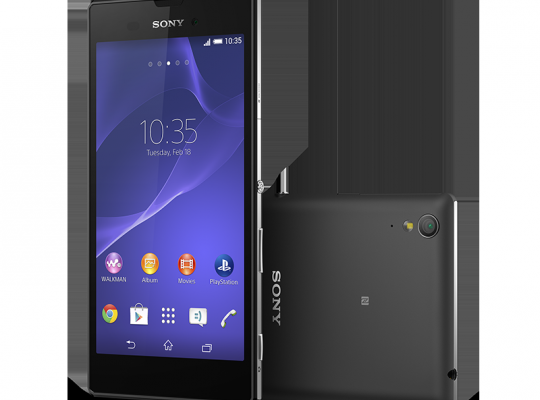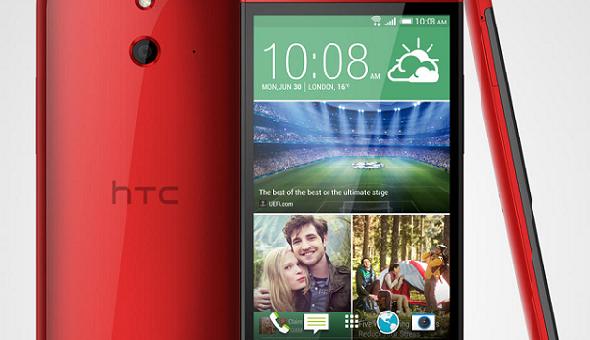Last Updated on August 20, 2015 by Mathew Diekhake
Overnight Sony announced the T3 — a smartphone that looks a lot like all of the other Xperia handsets from a design standpoint, but the specs are without a doubt unique. There is one prominent differentiation that separates this variant from others, and that is it is only 7mm thick. By today’s standards that is a very slim smartphone. If I was to compare that with the current Samsung flagship, the Galaxy S5 for instance, it comes in at 1.1mm thinner with the S5’s overall size being 8.1mm. Comparing it again but this time with something more relevant, the HTC One M8 is 9.35mm thick. That’s interesting to know because it is HTc’s new E8 limited edition Vogue smartphone that is drawing direct comparisons with this T3, and that makes them the closest thing to a rival we can find for the new T3.
I have already written lots on the E8 but to break it all down for you a lot quicker I’ll run through some of the things these two handsets have in common. Both the T3 and The E8 have Big displays that are also high-resolution, high resolution cameras, Quad-core processors, NFC and fast mobile 4G speed. However, it is the E8 that stands out to me more because it also has very high pixel density coming in at 370ppi, Dual-SIM card support and lots of Ram. Where the T3 fights back is the user replaceable battery that can never a feature with HTC handsets.
The last point I made is always being debated. You see, it is the battery that most people vote as the single most important feature when wanting a new feature to shine bright. Having a battery that the user cannot often change scares them but the manufacturer does this because they feel the battery is so good that it simply doesn’t need to change. I’ll go into more detail about the batteries for both devices further down the page. For now, I’m going to get started and show you exactly what is on both handsets.
Sony Xperia T3

The Japense-based phone maker is the newest since it was just announced within the last 24 hours so I will write about it first. What we grasp so far is that the T3 is a smartphone that runs Android 4.4. KitKat. It carries the dimensions of 5.93 x 3.03 x 0.28 inches and weighs as little as 148 grams.
The physical display is 5.3-inches, and it has a screen resolution of 720 x 1280 pixels. The display also has a pixel density of 277 ppi, IPS LCD technology; the touchscreen is multi-touch, and it has a light sensor and proximity sensor.
The hardware is a Qualcomm Snapdragon 400 system chip, coupled with a Quad core, 1400 MHz processor. It does have a graphics processor although there are no exact details. It has a system memory of 1024 MB RAM, 8 GB of internal storage and the user can buy an additional 32 GB of space by using a microSD, microSDHC storage expansion options.
The battery has a capacity of 2500 mAh, and it will last for 12.80 hours of talk time and 28.7 days stand-by time. According to reports, the average time is 20 days, so it does an excellent job of looking after itself. However, the talk-time is just over the average amount so when in use it doesn’t do anything extraordinarily.
The camera is 8 megapixels with a single LED flash. It has a bevy of features including Autofocus, Digital image stabilization, burst mode, Geo tagging, Panorama, smile detection, night mode and effects. There is also Touch to focus, face detection, white balance presets, digital zoom, HDR and macro mode. The camcorder is full 1080p HD, and it comes with digital image stabilization too. The front-facing snapper is a measly 1.1 megapixels so don’t expect any amazing quality selfies. As you can see there is no shortfall in features here, but most of them are on display on all modern day smartphones. The main determinant to watch hither is the megapixels, and this is about 50-60% of what you would find on the best smartphones out there today with the exception of a couple that we know of that have 20.1 megapixels including the new Galaxy Zoom.
The goal for Sony here has been to keep its existing customers by offering the Sony UI experience that they only make themselves and making an affordable device at the same time. They have included a strategy that seems to be working and is also being deployed by various other companies, and that is to offer the latest software with less power under the hood.
When it comes to directly comparing these two phones though I would go for the HTC One E8, and I’ll tell you why. Let’s take a peek at what it has to contribute.
HTC One E8

The E8 is a smartphone that comes with Android 4.4.2 KitKat with its own Sense 6.0 UI. Likewise if you are not a devotee of what Sense does it is hard not to like what they have managed to produce in this latest edition. It has the dimensions of 5.76 x 2.78 x 0.39 inches and weighs 145 grams. The body is Polycarbonate.
The display is 5.0-inches, and it has a 1080 x 1920 pixels resolution. That is enhanced further with a whopping pixel density of 441 ppi. It also has a light sensor and proximity sensor.
The hardware is a much faster Qualcomm Snapdragon 801 system chip, and that is as good as it gets by today’s standard. It is as good as what they put inside the current M8 flagship. The processor is a Quad core, 2300 MHz, Krait 400 and the graphics processor is Adreno 330. The system memory is 2048 MB RAM. It offers 16 GB of built-in storage, and it even comes with an extra 128 GB of external space with microSD, microSDHC, microSDXC expansion memory cards.
The battery gives 26.80 hours of talk time and 21.0 days of standby time. Let’s stop it here and have a think about that for a minute because it is an excellent demonstration of how talk and standby time can vary. It is also important for users to assess which one they prefer to last that makes sense for their lifestyle. If you are constantly on the mobile internet, SMS texting or talking then I highly recommend going for a device with the far better talk time compared to stand by time. In this case, the standby time is not impressive at all. In fact, it comes in just over average. However, the average talk time is 13 hours and this E8 manages to double that.
The camera is a rear-facing 13 megapixels with a single LED flash. In terms of features there is only a back-illuminated sensor, Geo tagging and auto focus. Again we are torn here compared to the T3 because instead of having lots of features it just offers a better quality picture. There’s no doubt that the E8 will take better looking photos, but how many of those features can you afford to sacrifice?
The result
To summarize, if you have no allegiance to the Sony Xperia name yet then you would be crazy to pick the T3 over the Vogue Edition E8 that HTC are offering. The E8 eclipses the T3 is almost every single category. The cost will vary because there’s no way you can sell a smartphone with so much fewer specs at the same price, but for many people going on a plan that doesn’t make any difference because it is coming cheap anyhow. For others, it will be subsidized.
Like all phones, it comes down to how much money you have to spend. If money is no obstacle in my expert opinion, it is the E8 Vogue Edition that wins this battle in every round and some of those rounds, it isn’t even close. However, does that mean if I had less money I wouldn’t buy a T3? Not at all. I think the T3 is a good looking device and for the right price there is nothing wrong with it. It takes a lot of its looks from the Xperia Z Flagships and even has a similar metallic power button. Where it differs is the plastic body and stainless steel frame around the edges. To me it looks fantastic though, and if you like the look of the Z and Z2 or even the Z Ultra and tablet Z2 then you should also find this handset attractive.
